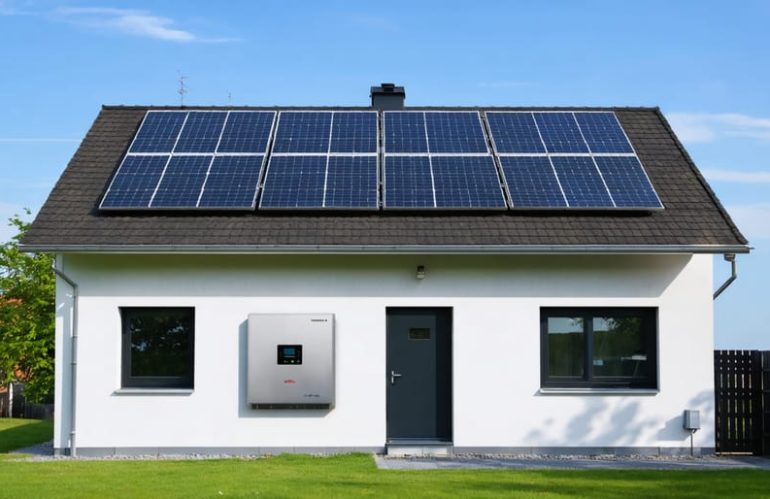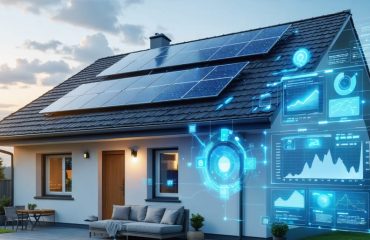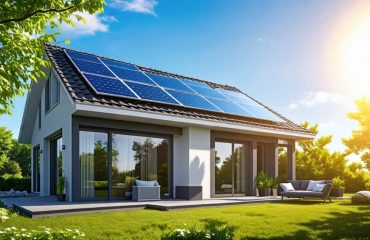Energy storage systems are revolutionizing how we capture, store, and use power in our homes and businesses. These intelligent power management solutions act like a bank for electricity, storing excess energy when it’s abundant and releasing it when needed most. Whether paired with solar panels or connected to the grid, energy storage systems offer homeowners unprecedented control over their power consumption while providing crucial backup during outages.
Think of an energy storage system as your personal power reservoir – much like having a water tank that collects rainwater for later use. This technology has become increasingly vital in our modern energy landscape, helping households reduce their carbon footprint, slash utility bills, and achieve greater energy independence. As electricity costs continue to rise and climate concerns grow, energy storage systems represent a practical solution that bridges the gap between intermittent renewable energy sources and our constant power needs.
How Energy Storage Systems Work
Key Components
An energy storage system consists of three essential components working together seamlessly. At its heart are the batteries, typically lithium-ion, which store excess energy for later use. Think of these as your home’s energy bank account, saving power when you have extra and providing it when you need it most. Modern batteries are compact, efficient, and can last for many years with proper maintenance.
The inverter is your system’s translator, converting DC power stored in the batteries into AC power that your home appliances can use. It also manages the power flow between your solar panels, batteries, and home, ensuring everything runs smoothly and efficiently.
Finally, the control system acts as the brain of your setup. This smart technology monitors energy production, storage levels, and household consumption in real-time. It makes intelligent decisions about when to store power and when to use it, maximizing your energy savings. Many modern control systems come with user-friendly apps that let you track your energy usage and storage from your smartphone, giving you complete visibility and control over your home’s energy management.
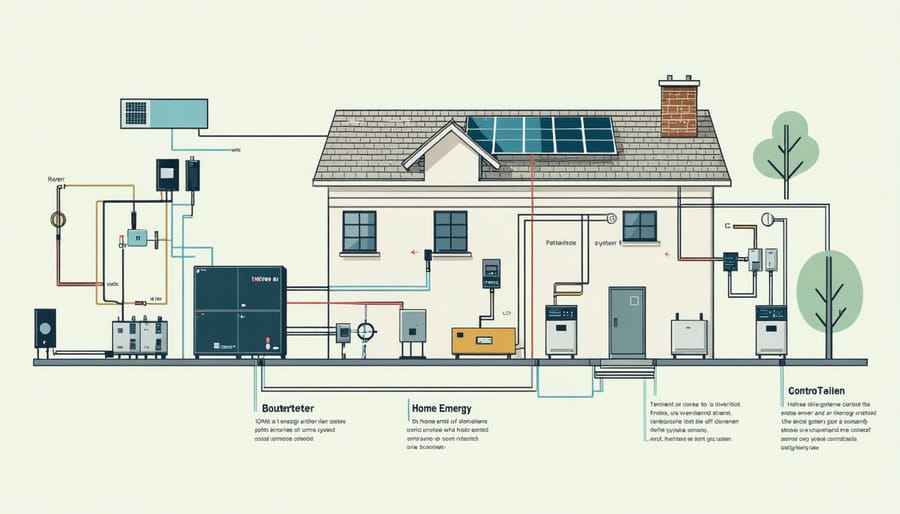
The Energy Flow Process
Think of your energy storage system as a well-orchestrated dance between three main partners: your solar panels, the battery storage system, and your home’s electrical needs. During daylight hours, your solar panels capture sunlight and convert it into electricity. This power flows in two directions: directly to your home to meet immediate energy needs, and to your battery storage system to save excess energy for later use.
When your solar panels produce more electricity than you’re using, the surplus energy charges your batteries, similar to filling up a tank for future use. As the sun sets or during cloudy days, the process reverses. Your home automatically draws power from the stored energy in your batteries, ensuring a seamless supply of electricity without interruption.
This continuous cycle of energy capture, storage, and use means you can power your home with clean solar energy 24/7. During peak consumption times or power outages, your storage system kicks in automatically, providing reliable backup power when you need it most. It’s like having your own personal power plant, working silently to keep your lights on and appliances running.
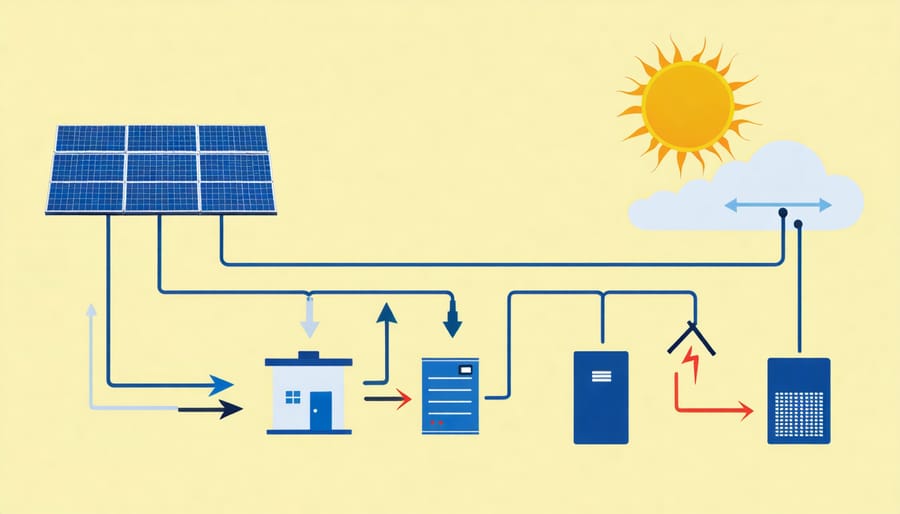
Types of Hybrid Energy Storage Solutions
Battery-Based Systems
Today’s battery energy storage systems are more advanced and accessible than ever before. The most common type is lithium-ion batteries, similar to those in your smartphone but scaled up for home use. These batteries offer excellent performance, long life spans, and are becoming increasingly affordable for homeowners.
Lead-acid batteries, while older technology, remain a reliable and cost-effective option for basic backup power needs. They’re particularly useful in areas with occasional power outages or when budget is a primary concern.
For homeowners seeking premium performance, salt-water batteries are emerging as an eco-friendly alternative. These systems use non-toxic materials and offer impressive durability, though they typically come with a higher price tag.
Flow batteries represent another innovative option, especially suitable for larger properties or commercial applications. They can store energy for longer periods and have virtually unlimited charging cycles.
Each battery type serves different needs: lithium-ion batteries work best for daily energy storage and solar integration, lead-acid batteries excel as backup power solutions, while salt-water and flow batteries offer specialized benefits for specific situations. The key is choosing the right system based on your energy needs, budget, and available space.
With proper maintenance, these battery systems can provide reliable power storage for 10-15 years, making them a smart long-term investment for your home’s energy independence.
Combined Storage Solutions
Modern energy storage systems shine brightest when different storage methods work together, creating a robust and reliable power solution for your home. Think of it as having multiple safety nets working in harmony. For example, you might combine a battery storage system with a thermal storage solution, allowing you to store both electrical energy and heat energy simultaneously.
A popular combination is pairing battery storage with hot water tanks. While your batteries handle electrical needs, the hot water system stores thermal energy during off-peak hours, helping you save on water heating costs. This dual approach maximizes your energy savings and provides better overall efficiency.
Many homeowners also integrate their storage systems with backup generators. This creates a comprehensive power security system – your batteries handle daily energy management, while the generator stands ready for extended outages or extreme weather events.
Smart home technology ties these systems together, automatically switching between different storage methods based on your energy needs and usage patterns. For instance, during sunny days, your system might prioritize storing solar energy in batteries, while during nighttime, it could switch to using stored thermal energy for heating.
The beauty of combined storage solutions is their flexibility – you can start with a basic system and gradually add components as your needs evolve, making it both practical and budget-friendly for most households.
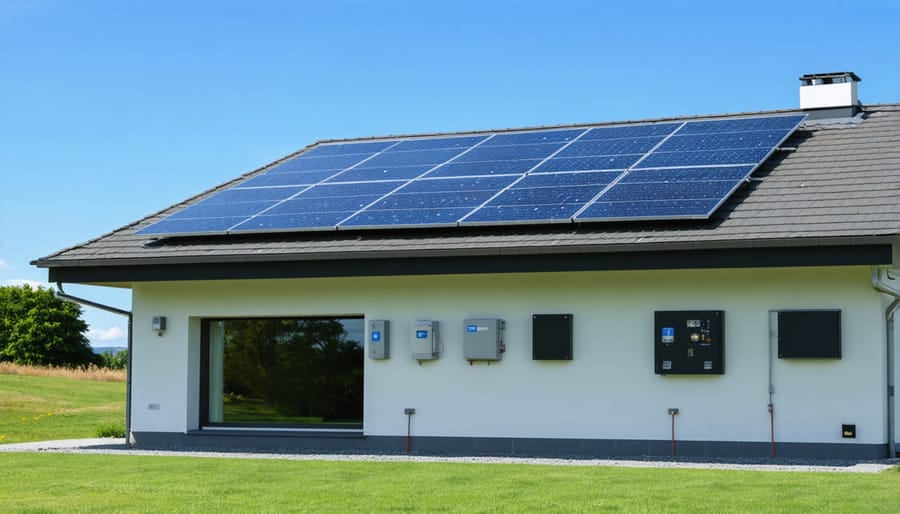
Benefits for Homeowners
Energy Independence
Energy storage systems offer a transformative path to energy independence, allowing homeowners to take control of their power supply. By storing excess energy generated from solar panels or during off-peak grid hours, these systems can power your home 24/7, even during grid outages or adverse weather conditions.
When the main power grid fails, your energy storage system seamlessly switches to backup power, ensuring your essential appliances keep running. This independence is particularly valuable during natural disasters or scheduled maintenance blackouts, providing peace of mind and uninterrupted daily routines.
Beyond emergency backup, energy storage systems allow you to maximize self-consumption of solar energy and reduce reliance on utility companies. By storing energy when it’s abundant and using it when needed, you can significantly decrease your dependence on the grid and potentially eliminate monthly electricity bills altogether.
The system’s smart technology automatically manages power flow, storing energy when prices are low and using stored power during peak rate periods. This intelligent energy management not only ensures reliable power supply but also protects you from rising utility costs and grid instability.
Cost Savings
Energy storage systems offer substantial financial benefits that make them an attractive investment for homeowners. By storing excess energy during off-peak hours when rates are lower, you can use this stored power during peak periods when electricity costs are highest, significantly reducing your monthly utility bills.
The return on investment for energy storage systems has become increasingly favorable as technology costs continue to decline. When paired with solar panels, these systems are crucial for maximizing your solar power investment by ensuring no generated energy goes to waste. Many homeowners report savings of 30-60% on their electricity bills after installation.
Additionally, many states and utilities offer incentives, tax credits, and rebates for installing energy storage systems, further improving the financial outlook. Some areas also have time-of-use rate programs where storing energy during low-rate periods and using it during high-rate times can lead to substantial savings.
The system’s ability to provide backup power during outages also protects against potential financial losses from spoiled food, business interruption, or damaged electronics. While the initial investment may seem significant, most homeowners find that their systems pay for themselves within 5-7 years through reduced energy costs and increased energy independence.
Making the Right Choice
Choosing the right energy storage system for your home requires careful consideration of several key factors. Start by assessing your daily energy consumption patterns and peak usage times to determine the appropriate storage capacity. A typical family home might need anywhere from 10 to 15 kWh of storage, but your specific needs may vary.
Budget plays a crucial role, but remember to consider long-term savings rather than just upfront costs. While lithium-ion batteries may cost more initially, their longer lifespan and better efficiency often make them more economical over time.
Available space and installation requirements should also factor into your decision. Some systems require climate-controlled environments, while others can be installed outdoors. Consider your home’s layout and identify a suitable location that’s accessible for maintenance.
Your local climate and weather patterns matter too. If you live in an area prone to power outages or extreme weather, you might want to prioritize systems with robust backup capabilities and weather-resistant features.
Don’t forget to check local regulations and utility policies. Some areas offer incentives for energy storage installation, while others may have specific requirements or restrictions. Working with a certified installer can help ensure your chosen system complies with all local codes and maximizes available incentives.
Finally, consider the system’s scalability. As your energy needs grow, you may want to expand your storage capacity, so choose a system that allows for future upgrades.
Energy storage systems represent a crucial step toward a more sustainable and energy-independent future. By understanding how these systems work and their numerous benefits, you can make an informed decision about incorporating them into your home. From reducing electricity bills to ensuring power during outages and supporting renewable energy adoption, energy storage solutions offer practical advantages for today’s homeowners. As energy costs continue to rise and grid reliability becomes increasingly important, now is the perfect time to consider investing in an energy storage system. Take the first step by consulting with local energy professionals who can help design a solution tailored to your specific needs. With the right system in place, you’ll be joining countless others in creating a more resilient and sustainable energy future while enjoying immediate benefits for your household.

